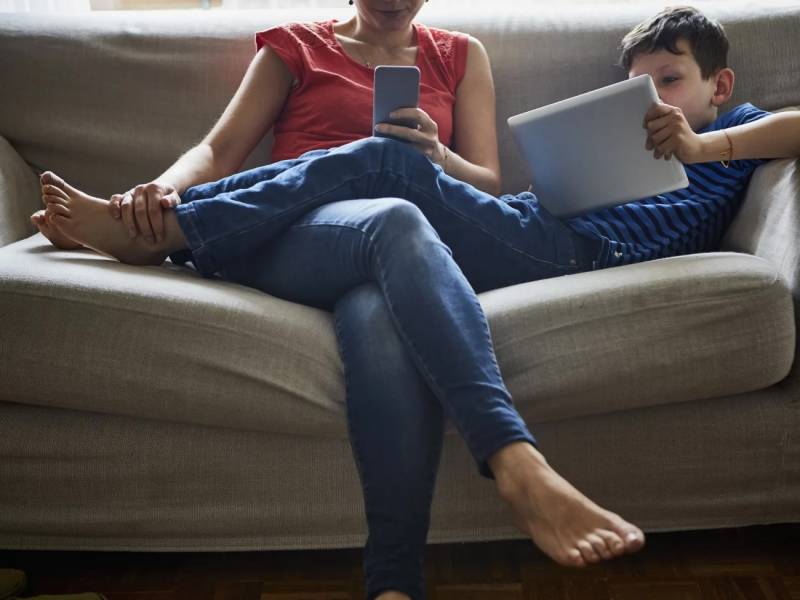As the parent of a tween and a young teenager, I couldn’t help but think of these Taylor Swift lyrics when reading the findings of a new study that looks at the links between parenting strategies and screen use among young adolescents.
The study looked at data from more than 10,000 12- and 13-year-olds and their parents, who were asked about their screen-use habits, including texting, social media, video chatting, watching videos and browsing the internet. The researchers also asked whether their screen use was problematic — for example, whether kids wanted to quit using screens but felt they couldn’t or whether their screen habits interfered with school work or daily life.
One key finding that jumped out at me: One of the biggest predictors of how much time kids spend on screens — and whether that use is problematic — is how much parents themselves use their screens when they are around their kids.
“It’s really important to role-model screen behaviors for your children,” says Jason Nagata, a pediatrician at the University of California, San Francisco and the lead author of the study, which appears in the journal Pediatric Research. “Even if teens say that they don’t get influenced by their parents, the data does show that, actually, parents are a bigger influence than they may think.”
It’s very common for parents like myself to feel guilty about their own screen use, says Jenny Radesky, a developmental behavioral pediatrician and media researcher at the University of Michigan.
But instead of beating ourselves up about it, she says, it’s important for parents to realize that just like kids, we too are vulnerable to the draws of technology that is deliberately designed to keep us scrolling.
“We have been asked to parent around an increasingly complex digital ecosystem that’s actively working against our limit-setting” — for ourselves and our kids, she says.
But even if parents are fighting against bigger forces designed to keep us glued to screens, that doesn’t mean we are completely helpless. Nagata’s research looked at parenting strategies that worked best to curb screen use specifically among early adolescents because, he notes, this is a time when kids are seeking more independence and “because we tend to see kids spending a lot more time on media once they hit their teenage years.”
So, what does work?
Some of the study’s findings seem fairly obvious: Keeping meal times and bedtime screen-free are strategies strongly linked to kids spending less time on screens and exhibiting less problematic screen use. And Nagata’s prior research has found that keeping screens out of the bedroom is a good strategy, because having a device in the bedroom was linked to trouble falling and staying asleep in preteens.
As for that finding that parental screen use also really matters, Radesky says it echoes what she often hears from teens in her work as co-medical director of the American Academy of Pediatrics’ Center of Excellence on Social Media and Youth Mental Health.
“We’ve heard a lot from teenagers that when their parents are using their phones, they’re really stuck on their own social media accounts — they just look unavailable,” Radesky says. “They don’t look like they’re ready and available for a teen to come up and talk and be a sounding board.”
Given the addictive design of technology, Radesky says the message shouldn’t be to blame the parents. The message should be to talk with your kids about why you feel so pulled in by screens. Ask, “Why do I spend so much time on this app? Is it time that I feel is really meaningful and adding to my day? Or is it time that I’d love to replace with other things?”
She says she favors this collaborative approach to setting boundaries around screen use for young tweens and teens, rather than using screens as a reward or punishment to control behavior. In fact, the new study shows that, at least with this age group, using screens as a reward or punishment can actually backfire — it was linked to kids spending more time on their devices.
Instead, Radesky says it’s better to set consistent family guidelines around screen use, so kids know when they can and can’t use them without obsessing about “earning” screen time.
And when it comes to tweens and teens, coming up with these rules together can be a good way to get kids to buy into boundaries — and to help both them and their parents break bad screen habits.
This story was edited by Jane Greenhalgh.
Copyright 2024 NPR. To see more, visit
https://www.npr.org.
http://dlvr.it/T7w3g2




